Categories > Guides and Tips
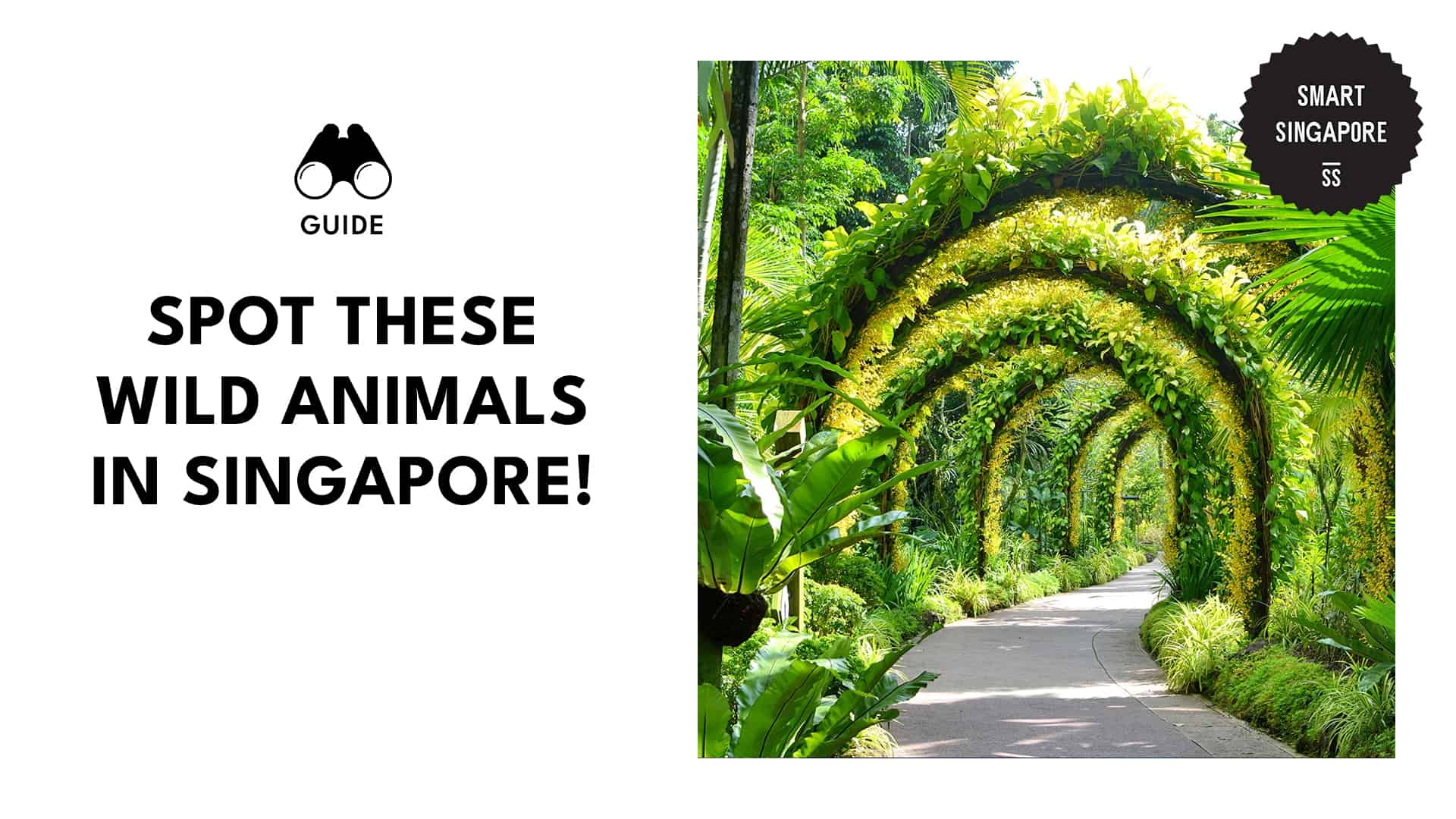
Spot these 8 wild animals in Singapore!
Singapore might not be the first place you think of for wildlife encounters. But an array of wild creatures thrives beneath the skyscrapers and bustling streets.
From graceful primates swinging through the rainforest canopy to playful otters frolicking in the waterways, Singapore’s hidden wilderness is brimming with life waiting to be discovered.
In this nature guide, discover extraordinary wild animals you can encounter right here in Singapore. So grab your binoculars, lace up your hiking boots, and prepare to be amazed by the untamed spirit that beats within the heart of Singapore.
Raffles Banded Langur
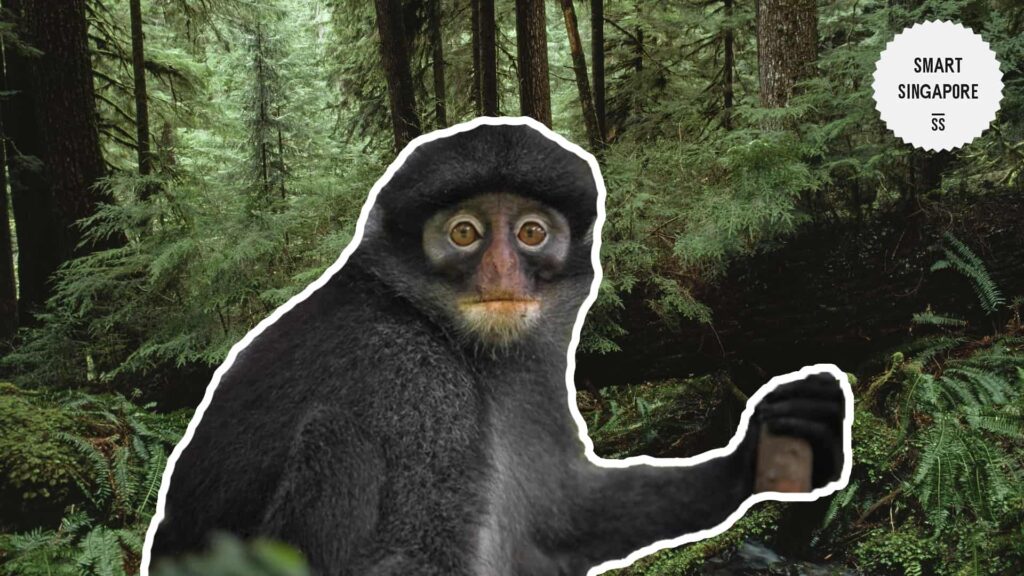
Best place to spot it: MacRitchie Reservoir Park (south-eastern end of the Central Catchment Nature Reserve)
Address: 601 Island Club Road
Contact details: +65 1800 471 7300
Operating hours: Open daily, 7 AM to 7 PM
The Raffles banded langur, a striking primate (also called the banded leaf monkey), swings through the forests of Singapore and Southern Malaysia.
The monkey’s sleek black coat is adorned with dazzling white stripes down its limbs. A white beard frames its face, adding wisdom to its expressive eyes.
This agile acrobat gracefully leaps through the treetops, feasting on leaves, fruits, and the occasional tasty insect. It uses loud calls that echo through the forest to mark its territory and to connect with its troop.
Malayan Colugo
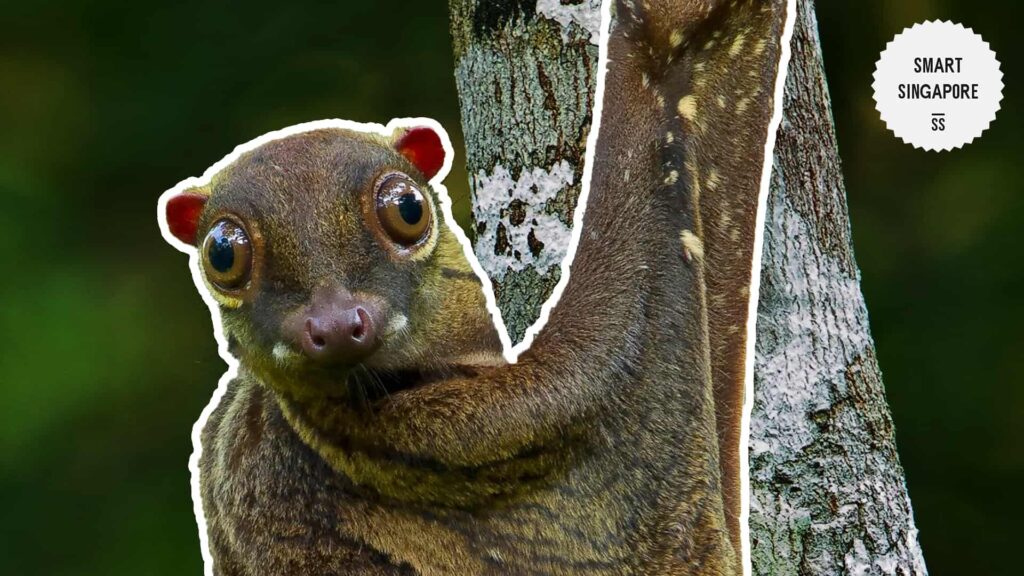
Best place to spot: Bukit Timah Nature Reserve
Address: Hindhede Drive
Contact details: +65 1800 471 7300
Operating hours: Open daily, 7 AM to 7 PM
The Malayan colugo, also known as the Sunda flying lemur, is a fascinating creature native to Southeast Asia.
It’s a squirrel-sized mammal with big, mesmerizing eyes and soft fur. It also has a unique furry, skin-like membrane stretching from its limbs to its tail.
It’s not a lemur, nor does it actually fly. It’s an expert glider that uses its unique membrane to soar between trees in the rainforest canopy. It can glide up to 70 meters (230 feet) in a single leap (Britannica).
Malayan colugos are nocturnal, spending their days sleeping upside down on tree branches. They wake up at night to feast on leaves, buds, and flowers, using their sharp claws and excellent sense of smell to navigate the darkness.
| Safety tip: As nocturnal animals, colugos are sensitive to light. Use dim flashlights when observing them, and avoid making loud noises. |
Common Palm Civet
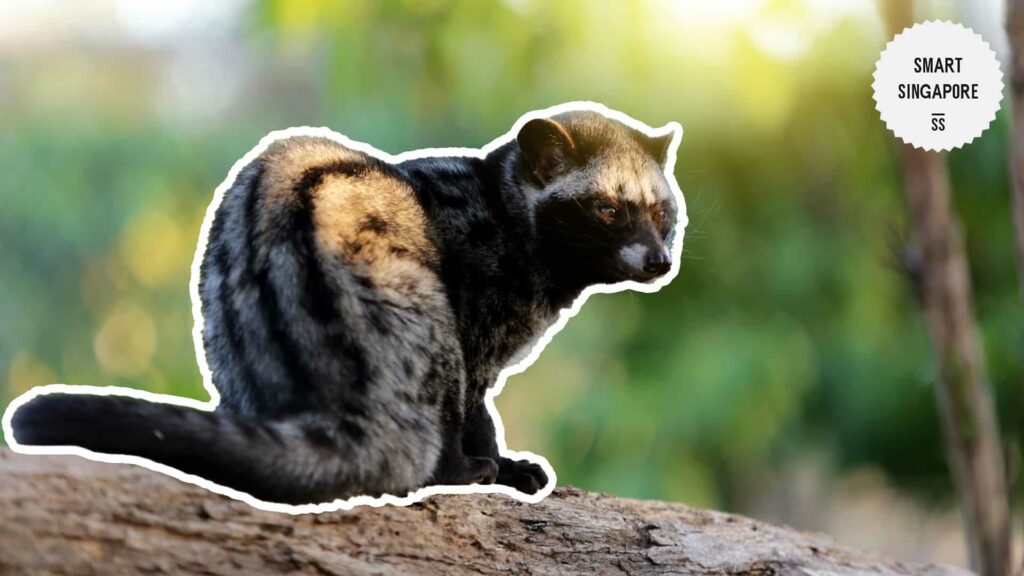
Best Place to Spot: Singapore Botanic Gardens
Address: 1 Cluny Road
Contact details: +65 6471 7138
Operating Hours: Open daily, 5 AM to 12 AM
The common palm civet is also known as the Asian palm civet, toddy cat, or musang. It’s a cat-like creature with a bushy tail, big, curious eyes, and fur that’s a mix of gray and brown, like a cuddly, fluffy cloud.
This nocturnal adventurer is a master of the trees, scampering through the canopy with its sharp claws and agility. It’s an omnivore, enjoying a diverse menu of fruits, insects, and even small animals.
It also plays a vital role in the ecosystem by dispersing seeds and helping to control insect populations.
Common palm civets are generally shy and solitary creatures, but they’re also quite adaptable. They can thrive in a variety of habitats, from dense forests to urban areas.
However, deforestation and hunting pose threats to their populations.
Oriental Pied-Hornbill
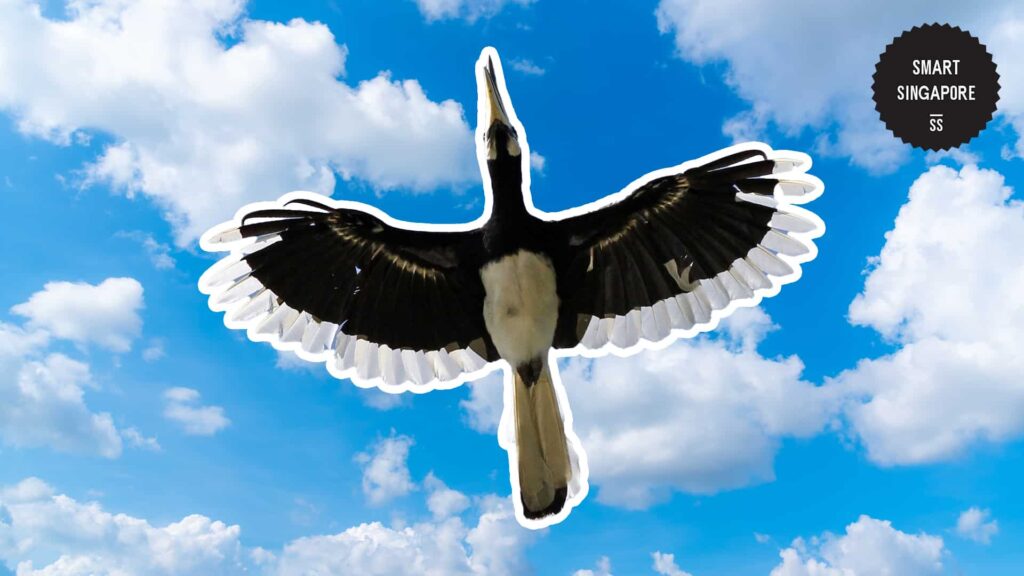
Best Place to Spot: Central Catchment Nature Reserve
Address: 601 Island Club Road
Contact details: +65 1800 471 7300
Operating Hours: Open daily, 7 AM to 7 PM
The oriental pied-hornbill is a captivating bird found with striking black and white plumage.
A prominent, helmet adorns its head. It has bright red legs and feet, adding a pop of color against the monochromatic feathers.
This hornbill is a skilled flier, navigating the jungle canopy with powerful wings and a long, sturdy beak. It’s a fruit-eater, but it can also eat insects, small reptiles, and even rodents.
Oriental pied-hornbills are social creatures living in monogamous pairs and forming small family groups. They communicate through loud, echoing calls, keeping in touch as they forage through the dense foliage.
Unfortunately, deforestation and hunting pose threats to these remarkable birds. Their stunning plumage has made them targets for the illegal wildlife trade, while habitat loss disrupts their natural breeding grounds.
Otter

Best Place to Spot: Sungei Buloh Wetland Reserve
Address: 301 Neo Tiew Cres
Contact details: +65 6794 1401
Operating Hours: Open daily, 7 AM to 7 PM
Singapore’s otters, specifically the smooth-coated otters, are playful yet resourceful residents of the city’s waterways. They navigate waterways with ease thanks to webbed paws and a powerful tail that acts like a rudder.
They’re skilled hunters, relying on their sharp senses and synchronized teamwork to catch fish, crabs, and other aquatic prey. Watching them hunt, with their coordinated dives and playful chases, is a captivating sight.
These otters live in close-knit family groups led by an experienced breeding pair. They fiercely protect their young, teaching them essential hunting and swimming skills.
Sea Turtle

Best Place to Spot: Pulau Ubin Island
Sea turtles are ancient mariners gliding through the waters near Pulau Ubin island. These are shelled reptiles with powerful flippers propelling them through the currents.
Green and hawksbill turtles are the two most frequent visitors to Pulau Ubin.
Greens, the larger of the two, graze on seagrass meadows, munching contentedly on the underwater pastures. Hawksbills, with their hooked beaks, pry sponges from hidden crevices in the coral reefs.
While rarely seen on land, they come ashore at night. Female turtles lumber onto sandy beaches, digging nests to lay their eggs.
Lesser Mouse-Deer
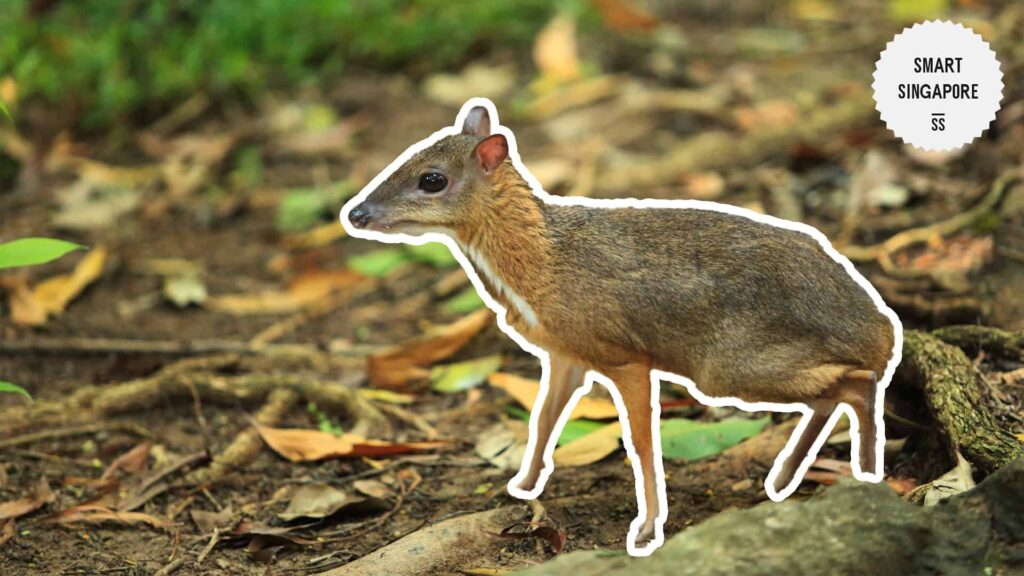
Best Place to Spot: Bukit Timah Nature Reserve
Address: Hindhede Drive
Contact details: +65 1800 471 7300
Operating Hours: Open daily, 7 AM to 7 PM
The lesser mouse-deer is the world’s smallest hoofed animal. It’s about the size of a big house cat, with slender legs, delicate features, and large eyes.
Its russet fur blends seamlessly with the forest floor to camouflage against predators.
This shy creature is incredibly agile, navigating dense vegetation with ease. Its small size allows them to squeeze through gaps and hop over fallen logs, leaving larger animals far behind.
Despite its name, the lesser mouse-deer isn’t closely related to the deer. However, it shares some deer-like traits, like their pointed hooves and solitary nature.
In Singapore, lesser mouse-deers are sadly listed as critically endangered. Their numbers are threatened by habitat loss and fragmentation.
Singapore-Native Bats
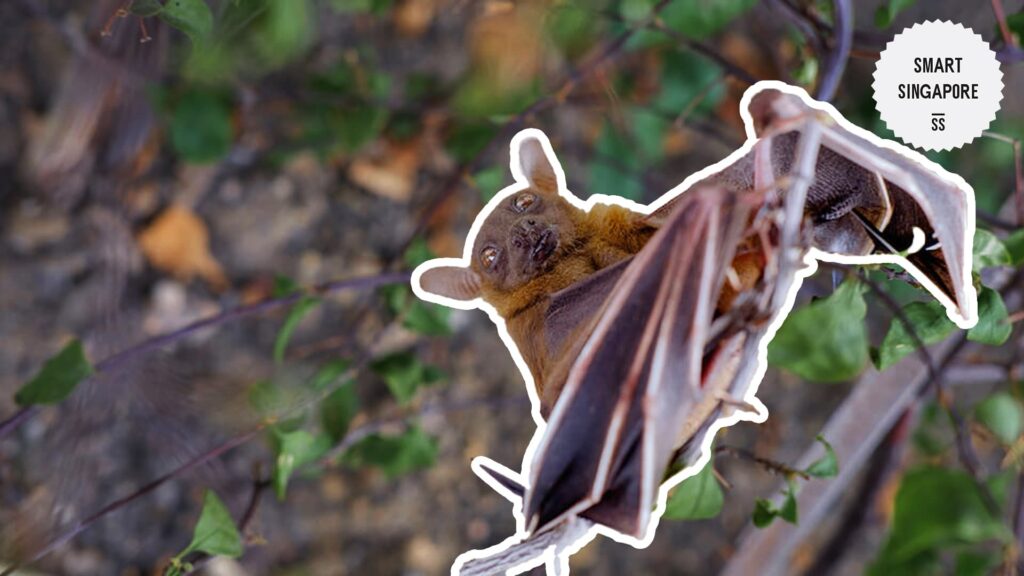
Best Place to Spot: Kent Ridge Park
Address: Vigilante Drive
Contact details: +65 1800 471 7300
Operating Hours: Open 24 hours daily
Kent Ridge Park boasts a surprising diversity of bats, with at least 10 native species recorded. These aerial acrobats play a vital role in the park’s ecosystem, helping to control insect populations and disperse seeds.
These species include the greater false vampire bat. These gentle giants feed on fruits and figs, their large jaws perfect for scooping up juicy treats.
Look for their dark brown fur and wings of up to 1 meter (3.3 feet) as they glide silently through the canopy.
There’s also the hill horseshoe bat with distinctive horseshoe-shaped nose-leafs used for echolocation. These small (50-60 cm wingspan) insectivores flit around streetlights and clearings, snapping up moths and midges on the wing.
Another one that’ll be easy to spot is the kuda flying fox, a large (up to 1.5 meters wingspan) fruit bat with reddish-brown fur and piercing yellow eyes. They feast on fruits like figs and rambutans.
Safety Tips When Spotting Wild Animals in Singapore

It’s important to remember that even seemingly adorable wild animals can be unpredictable, so respecting their space is crucial for both your safety and theirs.
Here are some key tips for spotting wild animals in Singapore:
Observe, but don’t disturb
Admire the animals at a safe distance. Use binoculars or zoom lenses for a closer look without encroaching on their territory.
Avoid sudden movements or loud noises by speaking softly and moving slowly.
Also, feeding wild animals can make them dependent on human handouts and disrupt their natural foraging instincts. It can also attract larger predators or lead to unwanted interactions.
Respect sensitive areas and report sightings responsibly
Nesting grounds and breeding zones are crucial for animal welfare. Stay clear of these areas to avoid disturbing vulnerable animals during critical times.
And if you encounter an injured or distressed animal, contact the National Parks Board (NParks) at 1800-435 7343. Reporting unusual animal behavior or sightings in new areas can help NParks monitor wildlife populations and manage potential conflicts.





